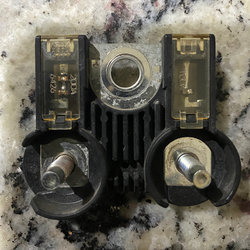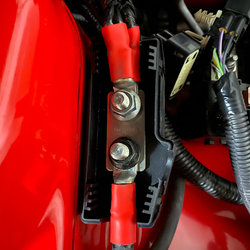I am relocating my battery to the trunk. I know there are lots of threads on that. But, what size fuse should I use on it? Can't find a definitive answer.
I have a PA Performance 215 amp alternator, so I have it fused at 250 amps.
So, should the battery be higher (300 amps?), or should I fuse the battery only enough to cover the starter drawl (150-175)?
I have a PA Performance 215 amp alternator, so I have it fused at 250 amps.
So, should the battery be higher (300 amps?), or should I fuse the battery only enough to cover the starter drawl (150-175)?




